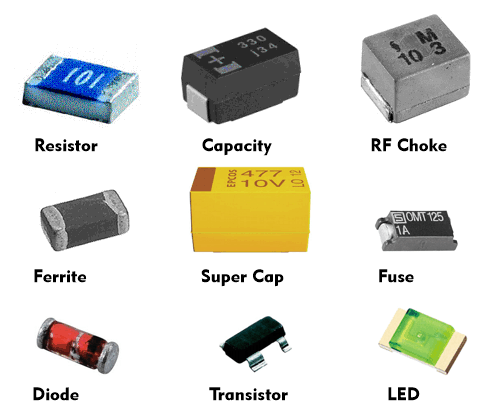surface mounted device (PCB) (SMD)
In the case of electronic components, a distinction is made between those with wire connections and those without. Components with wire connections are used for free wiring and for printed circuit boards with through-hole technology, those without wire connections for SMT technology.
SMD (Surface Mounted Device) components such as resistors, capacitors, inductors, diodes, transistors, crystals, light emitting diodes, etc. are extremely small and are manufactured using special techniques. For example, thin film resistors or thick film resistors are used. These SMD components are also called SMD chips. They are glued directly onto the copper-clad surface of the printed circuit board and then soldered using the reflow process. SMD assembly on both sides of the printed circuit board is possible. The SMD components do not require any hole drilling, which simplifies the assembly process.
SMD components have standardized sizes that are specified in milliinches (mils), in Europe in millimeters. The larger an SMD resistor or LED is, the higher its power rating. Thanks to the miniaturization of SMD components, they take up little space, which leads to greater compactness and a reduction in the weight of printed circuit boards. In order to be able to allocate the SMD components, they are marked with a special SMD code, which indicates the function of the component. The size of the SMD packages is specified in their sizes.

